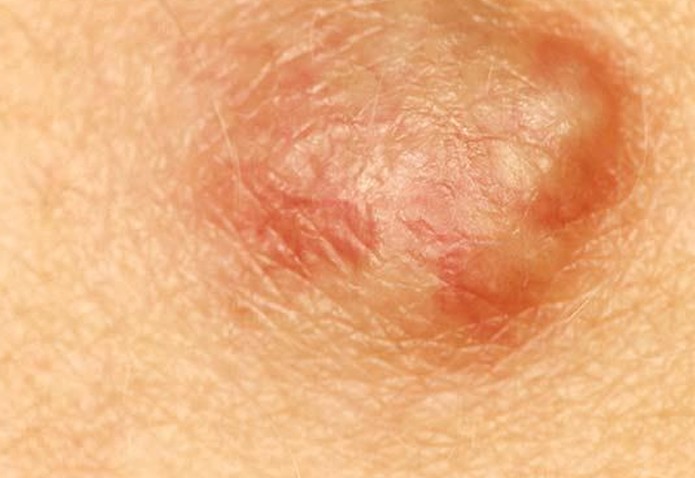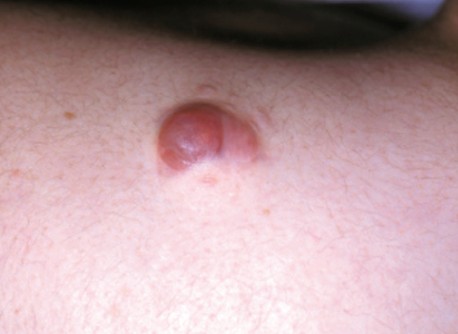Pilomatrixoma
Last reviewed by Dr. Raj MD on January 12th, 2022.
What is Pilomatrixoma?
This medical condition is a type of skin tumor which is a tumor that develops on the outer layer of your skin known as the epidermis. It is also called calcifying epithelioma of Malherbe or pilomatricoma. The word is a combination of three terms; pilo meaning hair, matrix meaning intercellular substance, and oma meaning tumor. Most of the time these types of skin tumors are benign, meaning non-cancerous, but some can be malignant, which means cancerous. If they are cancerous they are referred to as pilomatrical carcinoma. You will normally find pilomatrixoma on the side of your neck, cheek, eyelids, front area of your ear, or head as they originate in your hair follicles. Sometimes they may also appear on your arms and sometimes on your trunk and the lower and upper parts of your body.
The ones that are most commonly affected are children under the age of ten or women within thirty years of age. These tumors are usually discovered within the first twenty-four months of life. More females are diagnosed than males with Malherbe calcifying epithelioma. Although it can appear in all races it is mostly seen in the Caucasian race. Most of the time these tumors will appear singularly but there have been rare cases in which multiple tumors appear. It is considered a rare type of tumor and affects less than two hundred thousand people in the United States.
Pilomatrixoma Symptoms
Each patient that develops pilomatrixoma may experience different symptoms there is one common symptom that all patients will have and that is the appearance of a mass under their skin. Depending on whether or not the patient has developed an infection it may or may not be painful. In addition, the evidence of pain may also depend on how close the tumor sits to the nerves.
Other symptoms may include:
- These types of tumors are usually around the size of a pea, or less than three centimeters, so it may be difficult to see or feel them in the early stages.
- The skin that is covering pilomatrixoma may become discolored and will normally turn faint blue in appearance.
- They may feel hard when touching them.
Although most grow slowly in size there have been some that have grown as much as thirty-five millimeters in a little over six months.
Pilomatrixoma Causes
Your body is comprised of different types of cells with each having specific roles and functions. When a person has pilomatrixoma there are abnormal cells that closely resemble your hair cells that harden, or calcify, and join together causing a mass to form under your skin.
Some feel that pilomatrixoma has hereditary factors because when a child has this medical condition it is often seen in one or more members of the family. According to medical research that has been done it has shown that there are mutations in the CTNNB1 gene in at least seventy-six percent of pilomatrixoma cases diagnosed. The CTNNB1 gene is the one that is responsible for the protein that is needed to regulate cell attachment and growth.
Diagnosis
These tumors are first diagnosed by a physical exam. If your physician suspects a tumor they may recommend that you have a biopsy done to make sure if it is benign or malignant. If it appears to run in the family your physician may suggest genetic testing to see if it hereditary.
Pilomatrixoma Treatment
After properly diagnosing pilomatrixoma and whether it is benign or malignant treatment can start. Before deciding on which plan of treatment to use your physician will take into consideration the age of the child, their medical history, and overall current health. The physician will also take into consideration the tolerance the child has to specific therapies and medicines.
The most common form of treatment is to surgically remove the tumor unless it is malignant. The procedure is short and will usually not take too long to do. Normally it will take just one surgical operation to cure this condition. The reason that most physicians opt to surgically remove it is that the chances are low of it re-growing. If it is malignant, in addition to surgically removing it, the patient will undergo radiation or chemotherapy in order to prevent the cancer cells from spreading to other parts of your body.
Although early detection plays a big role in getting the proper treatment quickly, because pilomatrixoma grows very slowly it may be difficult in the earliest stages of development to detect this type of treatment. In the beginning stages it could be thought that you have other medical conditions that cause odd growths under your skin so this is why it is important to see your physician for a diagnosis as soon as you notice any abnormal lumps.
Pilomatrixoma Pictures
Collection of pictures of Pilomatrixoma…


